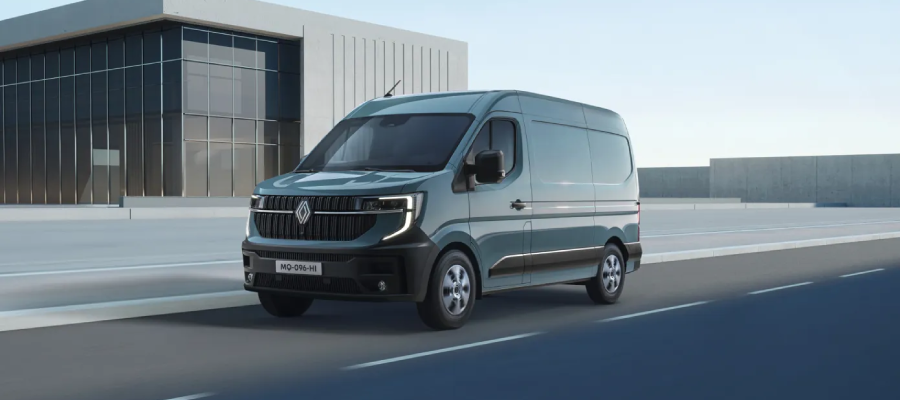The all-new Renault Master has been unveiled, showcasing a fresh design, cutting-edge technology, increased usability, and improved efficiency, space, and comfort. Available with electric and diesel drivetrains, the electric version boasts a class-leading range of up to 255 miles (the closest competitor is the Mercedes eSprinter with a WLTP range of 248 miles). The vehicle incorporates 20 sophisticated driver assistance systems for optimal safety and features the OpenR Link multimedia system with a 10-inch screen, wireless Android Auto and Apple CarPlay compatibility, built-in Google features, and remote vehicle connection via the My Renault app.
The aerodynamics of the new Master have been significantly improved, resulting in top-class efficiency, with CO2 emissions reduced by 39g/km. The multi-energy platform accommodates various drivetrains, including efficient diesel Blue dCi engines with four power options. The electric version, powered by a 105kW motor and an 87 kWh battery, offers a WLTP range of over 255 miles and includes Vehicle-to-Load (V2L) and Vehicle-to-Grid (V2G) capabilities.
Additionally, the Master is designed to accommodate a future hydrogen powertrain. The vehicle features V2X functionality in electric versions, allowing users to charge other devices and power custom-built body parts directly from the battery. The OpenR Link system integrates Google Assistant for voice commands and various apps tailored for professional use, enhancing convenience during the working day. Deliveries are set to begin in September 2024.
This new version of the Renault Master is an improvement over the current model. The most interesting features are the improved range and the V2X capabilities. The range benefits are obvious and V2X will add to the capabilities of an electric LCV allowing it to provide power at work sites and act as a storage battery for homes and businesses. These capabilities are likely to become more prevalent in future electric vehicles, the inclusion on the Renault Master will likely accelerate this as new models from other manufacturers will need to add this feature to stay competitive. This new Renault Master will also plan for a future hydrogen powertrain, indicating that Renault is expecting hydrogen to be used in future applications, likely long-range deliveries. Planning for future powertrains is likely made possible by all versions being built on the same assembly line, which allows a great deal of flexibility in handling customisation requests.
Get in touch if you want to learn more about the electric light commercial vehicle market, other electric vehicle markets or access our market data.
The original article is here.



